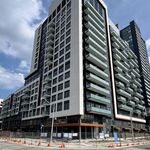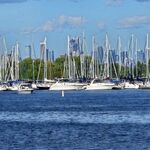ehlow
Senior Member
You can't really compare Canada to China in any way from what I understand, whether it be city population, density, regulations, government, labour costs, it's a completely different world.
It's not so much about the subways, it's about getting something done rather then bickering.
So, your saying we should start voting communist then, so we build more subway lines?In Nanjing, a city comparable to Toronto's size, 8 new subway lines are under construction at the same time as we speak, most of which will be completed with a couple of years, way ahead of Eglinton!
So, your saying we should start voting communist then, so we build more subway lines?
Or perhaps we should do it properly, execute the Tories and Liberals, and then go all Tiananmen Square Massacre killing thousands of opposition, so we can build the subways cheaper without proper studies or environmental assessments?
I say we simply should not change horses ...
No, he compared Toronto to cities in a communist dictatorship that has shamed the world by slaughtering it's own citizens, and then lying about it; and that steals land from people to build infrastructure with no compensation.This is so over the top. All the guy said is that Toronto is indecisive, which is true.
No, he compared Toronto to cities in a communist dictatorship that has shamed the world by slaughtering it's own citizens, and then lying about it; and that steals land from people to build infrastructure with no compensation.
You can't compare the results, without starting to look at the tyrannical regime behind them.
Fine, nfitz. Let's look at the other cities mentioned by diminutive. All of them also have done something. We need to stop making excuses for this city.There are lots of other cities that are not in the PRC which have still seen pretty substantial rapid transit growth.
Vienna's U-Bahn is two decades younger than Toronto's, yet is longer.
Taipei's Metro isn't even two decades old and is twice our network.
Stockholm's Metro is about the same age as ours, but is much longer.
Madrid has probably built several hundred kilometres of metro since the 1970s, ditto for Barcelona.
Milan's Metro is younger yet larger than ours.
Even Vancouver's more or less caught up with Toronto, despite our big head start and larger population.
I seem to remember that China doesn't even have especially low metro construction costs by global standards; while China has lower labour costs, this tends to be balanced by lower productivity. And while I'm hardly an expert on the Chinese legal environment, I don't think they get as many shortcuts as we like to imagine.
Fine, nfitz. Let's look at the other cities mentioned by diminutive. All of them also have done something. We need to stop making excuses for this city.
Yeah, but what's the average density of Nanjing vs. the GTA? Population size isn't a great indicator of the viability of subways per se.
AoD
What I was thinking is that the TTC or Metrolinx should maybe start looking at an "infill" policy, for lack of a better term. What I mean by this is identify areas on the subway system that have been bypassed for the sake of speed or cost, but could support a station. A few locations of the top of my head:
Yonge: Blythwood (between Eglinton and Lawrence), Glen Echo (between Lawrence and York Mills), Lord Seaton/Highway 401 (would serve southern end of NYCC cluster).
Blythwood I could definitely imagine. Glen Echo I'm less sure about since there's the ravine just north of it, it seems like there are less people living around it than Blythwood.
Interesting discussion here on re-examining old alignments and station locations.
One of the things that I have been thinking about is, when the GO REX network (or something like it) comes to fruition, how will the dynamics of the subway system change? Chances are a lot of current subway riders, particularly the long haul ones (Finch -> Downtown, Kipling -> Downtown, etc) will become GO REX riders. This means that the subway will have the potential to perform a more local rapid transit role.
What I was thinking is that the TTC or Metrolinx should maybe start looking at an "infill" policy, for lack of a better term. What I mean by this is identify areas on the subway system that have been bypassed for the sake of speed or cost, but could support a station. A few locations of the top of my head:
Yonge: Blythwood (between Eglinton and Lawrence), Glen Echo (between Lawrence and York Mills), Lord Seaton/Highway 401 (would serve southern end of NYCC cluster).
Bloor-Danforth: Firvalley (between Vic Park and Warden stations), Birchmount (between Warden and Kennedy).
Sheppard: Willowdale (between Yonge and Bayview).
Some of these locations had planned areas for future stations that were just never built, while some would need more extensive upgrades in order to fit a station in.
Given the premium that developers place on direct subway access, there could be some interesting opportunities for full or partial funding of these stations via redevelopment of adjacent properties. When you look at Yonge south of Eglinton and most of Bloor-Danforth, the walking radii around stations nearly all overlap. It's only north of Eglinton and east of Victoria Park that you get substantial gaps in those radii. Adding infill stations would mean that pretty much anywhere along those corridors would be within walking distance of a subway stop.




